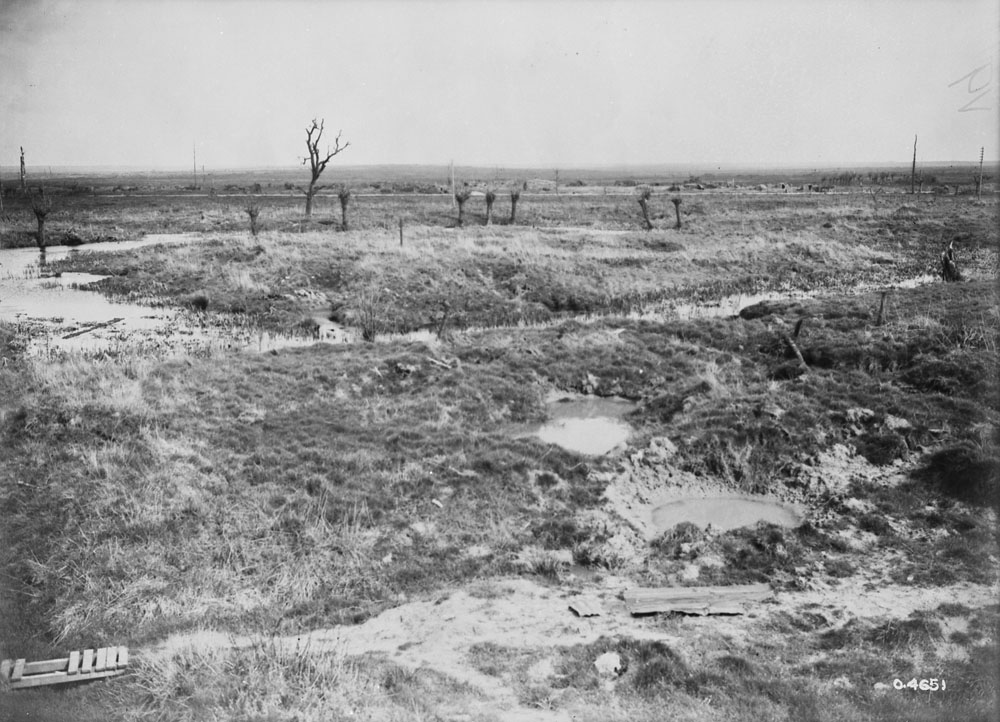The First Gas Attacks, Second Battle of Ypres, 22-24 April 1915
The video is a panoramic view from Gravenstafel (Sheet 28.D.9.c.8.3, the crossroads of Schipstraat and ‘s Gravenstafelstraat) on 17 April 1915, only five days before the German Army unleashed 150 tons of lethal chlorine gas against two French colonial divisions during the Second Battle of Ypres.
The Ypres Salient
The Ypres Salient developed during the First Battle of Ypres. Strong German forces moving west clashed with the B.E.F. and French units in a series of confusing, but fierce encounters between 19 October and 22 November 1914, from Langemarck in the north-east through Zonnebeke, Gheluvelt, Zandvoorde, Wytschaete and Messines in the south.
On the first day of the Second Battle of Ypres, the front collapsed to the GHQ line, with the 10th and 16th Canadian Infantry Battalions successfully preventing a German breakthrough, thus preventing an early end to the Great War (and a German victory).

The 2nd Canadian Infantry Brigade Commander, Brig.-Gen. Arthur William Currie promoted to Major-General following the battle. The Honour “Gravenstafel” awarded to Canadian units for their actions defending against the German attack.
Greatest Act of the War
Currie’s calculated decisions in the fog-of-war made the difference in the battle. But, it was the supreme sacrifice of the 10th and 16th Battalions that led the Supreme Allied Commander, Marshal Ferdinand Foch to declare following the Great War, their assault on an entire German Division was the “greatest act of the war”.
Battle of Gravenstafel Ridge
Gravenstafel, Second Battle of Ypres, 24 April 1915. This same area, the vicinity of the second Gas Attacks. On this occasion, the Canadian Corps holding the line as the cloud of green gas fell into their crude trenches. Men struggled to operate their jamming Ross rifles while peering through urine-soaked improvised masks.
Note, in less than two years, this area is completely unrecognizable, and becomes for Canadians, in the words of Lt.-Col. Agar Adamson of Princess Patricia’s Canadian Light Infantry, “that God-forsaken land” during the Second Battle of Passchendaele.
Today, Passchendaele is once again the same beautiful countryside it was in 1914.
More
Please subscribe to CEFRG to be notified by email when there are new posts. Subscription is free, and your email kept confidential.
